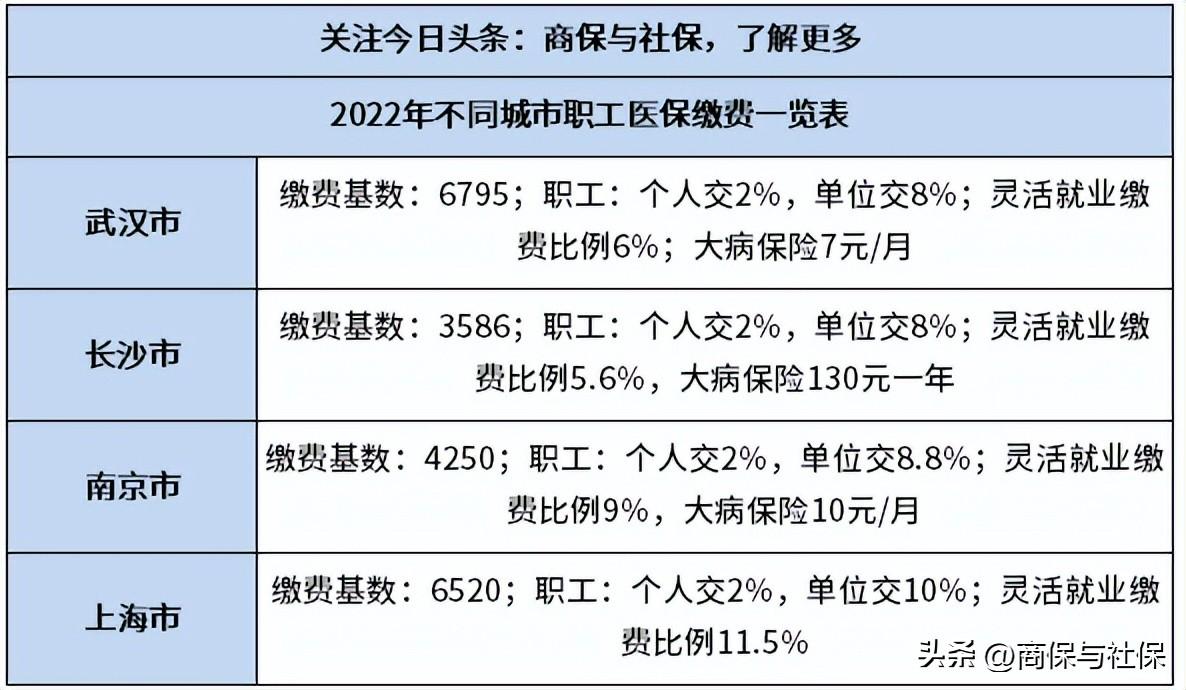参考文章
本期仍旧是处理TCGA数据,挑出肿瘤样本,然后将挑选出的样本按照是否有TP53进行分组,之后的流程就是一般性的差异分析以及对结果的注释。
这对我们做数据挖掘来说,是一个非常好的学习典范,不要老想着比较normal和tumor,也不要只能简单的想到人群差异,年龄差异这样的显而易见的表型野生型和突变型的区别,可以尝试开阔一下思路。
当然,也不是说这个按照TP53突变与否的分类就多高明,这是一个引子,帮助你融入自己的背景知识,既然突变与否可以进行分组,那么甲基化高低呢?通路改变与否呢?
亲爱的读者有什么想法也可以留言参与讨论,当然野生型和突变型的区别,很大概率上,你会隐藏 你的想法,呵呵
第一步 安装必要的R包
# Step0 Before starting your project --------------------------------------
## Remove everything in the working environment, not including loaded libraries.
rm(list = objects( all = TRUE ))
if (!is.null( dev.list() )) dev.off()
clearhistory <- function() {
write( "", file = ".blank" )
loadhistory( ".blank" )
unlink( ".blank" )
}
clearhistory()
## basecal packages
sysPackages <- (.packages())
## data.frame(..., row.names = NULL, check.rows = FALSE,
## check.names = TRUE, fix.empty.names = TRUE,
## stringsAsFactors = default.stringsAsFactors())
options( stringsAsFactors = FALSE )
## Now winInet not supported for use in service, but the default setting of
## download.file.method is "wininet".
## If your system support "libcurl", set the downloaded method to libcurl.
if ( capabilities( "libcurl" ) == T ) {
options( download.file.method = "libcurl" )
}
options()$download.file.method
## Change the library location of the packages
## Even your updated your R, you can still use your packages.
.libPaths( c( "G:/R-packages",
"C:/Program Files/R/R-3.5.2/library") )
.libPaths()
## 上面的步骤是为了创建一个方便处理数据的环境,之后的每步运行之前我都会先运行一下这部分代码,由于篇幅有限,就不重复出现了
# Step1 Setting CRAN mirror -----------------------------------------------
local({
options( repos = "https://mirrors.ustc.edu.cn/CRAN/" )
options( BioC_mirror = "https://mirrors.ustc.edu.cn/bioc/" )
})
# Step2 List of the used packages ----------------------------------------
bioPackages <-
c(
"dplyr", "stringi", "purrr", ## ERROR
"R.utils", "data.table", ## unzip and read table
"GEOquery", ## download
"FactoMineR", "factoextra", "ggfortify", ## PCA
"pheatmap", ## heatmap
"ggplot2", ## Volcano plot
"limma", "DESeq2", "edgeR", ## DEG
"clusterProfiler", "org.Hs.eg.db", ## annotation
"pathview" ## kegg
)
# Step3 Install the packages ----------------------------------------------
lapply( bioPackages,
function(bioPackage) {
if ( !require( bioPackage, character.only = T ) ) {
CRANpackages <- available.packages()
## install packages by CRAN
if ( bioPackage %in% rownames( CRANpackages ) ) {
install.packages( bioPackage )
}else{
## install packages by bioconductor
## R version >= 3.5 ===> BiocManager
if ( as.character( sessionInfo()$R.version$minor ) >= 3.5 ) {
if (!requireNamespace("BiocManager", quietly = TRUE))
install.packages("BiocManager")
BiocManager::install(bioPackage, update = TRUE, ask = FALSE)
}else{
## R version BiocInstaller
if (!requireNamespace("BiocInstaller", quietly = TRUE))
source( "https://bioconductor.org/biocLite.R" )
BiocInstaller::biocLite( bioPackage, ask = FALSE)
}
}
}
}
)
# Step4 Remove new loaded packages ----------------------------------------
allPackages <- (.packages())
newPackages <- setdiff( allPackages, sysPackages )
lapply( newPackages,
function(package) {
package <- paste('package:', package, sep = "", collapse = NULL)
detach( package, character.only = TRUE )
}
)
## 这一步是卸载已经加载的包,篇幅有限,同Step0步骤一样,之后就不重复书写了上面的代码组织的非常棒,值得初学者花十几个小时自行理解和模范,尤其是R包存放,已经批量下载,这些小技巧会极大的增加你使用R语言完成自己项目的效率。
而且里面隐含着一些R不常用的概念,是你在大多数书籍上面都学不到的,更别说是视频教程了。
第二步 下载和处理TCGA数据
# Step1 download TCGA dateset ---------------------------------------------
if (!file.exists( './data/TCGA-BRCA.htseq_counts.Rdata' )) {
gzfile <- "./raw_data/TCGA-BRCA.htseq_counts.tsv.gz"
download.file("https://gdc.xenahubs.net/download/TCGA-BRCA/Xena_Matrices/TCGA-BRCA.htseq_counts.tsv.gz",
destfile = gzfile)
library(R.utils)
gunzip(gzfile, remove = F)
library(data.table)
raw_data <- fread( "./raw_data/TCGA-BRCA.htseq_counts.tsv",
sep = ' ', header = T)
raw_data <- as.data.frame( raw_data )
raw_data[1:5, 1:6]
rownames( raw_data ) <- raw_data[, 1]
raw_data <- raw_data[, -1]
raw_data[1:5, 1:6]
raw_data <- 2^raw_data - 1
raw_data <- ceiling( raw_data )
raw_data[1:5, 1:6]
pick_row <- apply( raw_data, 1, function(x){
sum(x == 0) < 10
})
raw_data <- raw_data[pick_row, ]
dim(raw_data )
save( raw_data, file = './data/TCGA-BRCA.htseq_counts.Rdata' )
}else{
load('./data/TCGA-BRCA.htseq_counts.Rdata')
}
# Step2 Grouping by special clinical information --------------------------
if (!file.exists( './raw_data/TCGA-BRCA.GDC_phenotype.tsv.gz' )) {
gzfile <- "./raw_data/TCGA-BRCA.GDC_phenotype.tsv.gz"
download.file("https://gdc.xenahubs.net/download/TCGA-BRCA/Xena_Matrices/TCGA-BRCA.GDC_phenotype.tsv.gz",
destfile = gzfile)
phenoData <- read.table( gzfile,
header = T,
sep = ' ',
quote = '' )
save( phenoData, file = './data/TCGA-BRCA.GDC_phenotype.Rdata' )
}else{
load('./data/TCGA-BRCA.GDC_phenotype.Rdata')
}
pheno_num <- c()
invisible(
lapply(1:ncol(phenoData),
function(col_num){
## Assume that the classification project is between 2 and 4
if (1 < dim(table(phenoData[,col_num])) &
dim(table(phenoData[,col_num])) < 5) {
pheno_num <<- append(pheno_num, col_num, after = length(pheno_num))
}
}
)
)
View(phenoData[, pheno_num])
names(phenoData[, pheno_num])
## Category 3: TP53
if (!file.exists( './raw_data/TCGA-BRCA.mutect2_snv.tsv.gz' )) {
gzfile <- "./raw_data/TCGA-BRCA.mutect2_snv.tsv.gz"
download.file("https://gdc.xenahubs.net/download/TCGA-BRCA/Xena_Matrices/TCGA-BRCA.mutect2_snv.tsv.gz",
destfile = gzfile)
mutype_file <- read.table( gzfile,
header = T,
sep = ' ',
quote = '' )
save( mutype_file, file = './data/TCGA-BRCA.mutect2_snv.Rdata' )
}else{
load('./data/TCGA-BRCA.mutect2_snv.Rdata')
}
## Pick columns that contains 'tp53'
TP53 <- mutype_file[mutype_file$gene == 'tp53' | mutype_file$gene == 'TP53',]
TP53_sample <- unique( sort( TP53$Sample_ID ) )
tumor_sample <- colnames(raw_data)[substr( colnames(raw_data),14,15) < 10]
TP53_sample <- intersect(tumor_sample, TP53_sample)
noTP53_sample <- setdiff(tumor_sample, TP53_sample)
save(TP53_sample, noTP53_sample, file = './data/sample_by_TP53.Rdata')
# Step3 Filt sample ------------------------------------------------
load('./data/TCGA-BRCA.htseq_counts.Rdata')
tp53_sample <- c(TP53_sample, noTP53_sample)
AssayData <- raw_data[, tp53_sample]
dim(AssayData)
group_list <- c(rep('TP53', length(TP53_sample)),
rep('NO_TP53', length(noTP53_sample)))
save(AssayData, group_list, file = './data/tnbc_tumor_TP53_AssayData.Rdata')
XENA数据中心一直是我们大力推荐的TCGA下载方式,我们也有视频指导:
第三步 差异分析并绘图
## 绘制热图和火山图的函数
draw_heatmap <- function(nrDEG, type){
library( "pheatmap" )
nrDEG_Z = nrDEG[ order( nrDEG$logFC ), ]
nrDEG_F = nrDEG[ order( -nrDEG$logFC ), ]
choose_gene = c( rownames( nrDEG_Z )[1:50], rownames( nrDEG_F )[1:50] )
choose_matrix = AssayData[ choose_gene, ]
choose_matrix = t( scale( t( choose_matrix ) ) )
choose_matrix[choose_matrix > 2] = 2
choose_matrix[choose_matrix < -2] = -2
annotation_col = data.frame( CellType = factor( group_list ) )
rownames( annotation_col ) = colnames( AssayData )
filename <- paste('./fig/', type, '_heatmap_top100_logFC.png',
sep = "", collapse = NULL)
pheatmap( fontsize = 6, choose_matrix, annotation_col = annotation_col,
show_rownames = T, show_colnames = F,
annotation_legend = T, cluster_cols = T,
filename = filename)
}
draw_volcano <- function(nrDEG, type){
library( "ggplot2" )
logFC_cutoff <- with( nrDEG, mean( abs( logFC ) ) + 2 * sd( abs( logFC ) ) )
nrDEG$change = as.factor( ifelse(
nrDEG$P.Value < 0.01 & abs(nrDEG$logFC) > logFC_cutoff,
ifelse( nrDEG$logFC > logFC_cutoff, 'UP', 'DOWN' ), 'NOT' ) )
nrDEGfile <- paste('./data/', type, '_nrDEG_by_logFC.Rdata',
sep = "", collapse = NULL)
save( nrDEG, file = nrDEGfile )
this_tile <- paste0(
'Cutoff for logFC is ', round( logFC_cutoff, 3 ),
'
The number of up gene is ', nrow(nrDEG[ nrDEG$change == 'UP', ] ),
'
The number of down gene is ', nrow(nrDEG[ nrDEG$change == 'DOWN', ] ) )
volcano = ggplot(data = nrDEG,
aes( x = logFC, y = -log10(P.Value), color = change)) +
geom_point( alpha = 0.4, size = 1.75 ) +
theme_set( theme_set( theme_bw( base_size = 15 ) ) ) +
xlab( "log2 fold change" ) + ylab( "-log10 p-value" ) +
ggtitle( this_tile ) +
theme( plot.title = element_text( size = 15, hjust = 0.5 )) +
scale_colour_manual( values = c('blue','black','red') )
print( volcano )
filename <- paste('./fig/', type, '_volcano_logFC.png',
sep = "", collapse = NULL)
ggsave( volcano, filename = filename )
dev.off()
}
# Step2 Then run edgeR ----------------------------------------------------
library(edgeR)
## A list-based S4 class for storing read counts and associated information
## from digital gene expression or sequencing technologies.
DGElist <- DGEList( counts = AssayData, group = factor(group_list) )
## Counts per Million or Reads per Kilobase per Million
keep_gene 1 ) >= 2
table(keep_gene)
DGElist <- DGElist[ keep_gene, , keep.lib.sizes = FALSE ]
## Calculate Normalization Factors to Align Columns of a Count Matrix
DGElist <- calcNormFactors( DGElist )
DGElist$samples
design <- model.matrix( ~0 + factor(group_list) )
rownames(design) <- colnames(DGElist)
colnames(design) <- levels(factor(group_list))
## Estimate Common Dispersion for Negative Binomial GLMs
DGElist <- estimateGLMCommonDisp(DGElist, design)
## Estimate Trended Dispersion for Negative Binomial GLMs
DGElist <- estimateGLMTrendedDisp(DGElist, design)
## Empirical Bayes Tagwise Dispersions for Negative Binomial GLMs
DGElist <- estimateGLMTagwiseDisp(DGElist, design)
## glmFit fits genewise negative binomial glms, all with the same design matrix
## but possibly different dispersions, offsets and weights
fit <- glmFit(DGElist, design)
## https://www.biostars.org/p/110861/
## glmLRT conducts likelihood ratio tests for one or more coefficients in the
## linear model.
results <- glmLRT(fit, contrast = c(-1, 1))
nrDEG_edgeR <- topTags(results, n = nrow(DGElist))
nrDEG_edgeR <- as.data.frame(nrDEG_edgeR)
head(nrDEG_edgeR)
colnames(nrDEG_edgeR)[4] <- c("P.Value")
draw_heatmap(nrDEG = nrDEG_edgeR, type = 'edgeR')
draw_volcano(nrDEG = nrDEG_edgeR, type = 'edgeR')
# Step3 Lastly run voom from limma ----------------------------------------
library(limma)
## A list-based S4 class for storing read counts and associated information
## from digital gene expression or sequencing technologies.
DGElist <- DGEList( counts = AssayData, group = factor(group_list) )
## Counts per Million or Reads per Kilobase per Million
keep_gene 1 ) >= 2
table(keep_gene)
DGElist <- DGElist[ keep_gene, , keep.lib.sizes = FALSE ]
## Calculate Normalization Factors to Align Columns of a Count Matrix
DGElist <- calcNormFactors( DGElist )
DGElist$samples
design <- model.matrix( ~0 + factor(group_list) )
rownames(design) <- colnames(DGElist)
colnames(design) <- levels(factor(group_list))
## Transform RNA-Seq Data Ready for Linear Modelling
v <- voom(DGElist, design, plot = TRUE, normalize = "quantile")
## Fit linear model for each gene given a series of arrays
fit <- lmFit(v, design)
## Construct the contrast matrix corresponding to specified contrasts of a set
## of parameters.
cont.matrix <- makeContrasts(contrasts = c('TP53-NO_TP53'), levels = design)
## Given a linear model fit to microarray data, compute estimated coefficients
## and standard errors for a given set of contrasts.
fit2 <- contrasts.fit(fit, cont.matrix)
## Empirical Bayes Statistics for Differential Expression
fit2 <- eBayes(fit2)
nrDEG_limma_voom = topTable(fit2, coef = 'TP53-NO_TP53', n = Inf)
nrDEG_limma_voom = na.omit(nrDEG_limma_voom)
head(nrDEG_limma_voom)
draw_heatmap(nrDEG = nrDEG_limma_voom, type = 'limma_voom')
draw_volcano(nrDEG = nrDEG_limma_voom, type = 'limma_voom')
# Step4 Compare three methods ---------------------------------------------
cor(na.omit(lf))
mi <- unique(c(rownames(nrDEG_edgeR),
rownames(nrDEG_limma_voom)))
lf <- data.frame(edgeR = nrDEG_edgeR[mi, 1],
limma_voom = nrDEG_limma_voom[mi, 1])
cor(na.omit(lf))
## edgeR limma_voom
## edgeR 1.0000000 0.9118619
## limma_voom 0.9118619 1.0000000
左图是edgeR的火山图结果,右图是limma的火山图结果

左图是edgeR的火山图结果,右图是limma的火山图结果
第四步 通路注释
## function of KEGG pathway
kegg_plot <- function(type) {
kk.up <- enrichKEGG( gene = gene_up ,
organism = 'hsa' ,
universe = gene_all ,
pvalueCutoff = 0.8 ,
qvalueCutoff = 0.8 )
kk.down <- enrichKEGG( gene = gene_down ,
organism = 'hsa' ,
universe = gene_all ,
pvalueCutoff = 0.8 ,
qvalueCutoff = 0.8 )
library( "ggplot2" )
kegg_down_dt <- as.data.frame( kk.down )
kegg_up_dt <- as.data.frame( kk.up )
down_kegg <- kegg_down_dt[ kegg_down_dt$pvalue < 0.05, ]
down_kegg$group <- -1
up_kegg <- kegg_up_dt[ kegg_up_dt$pvalue < 0.05, ]
up_kegg$group <- 1
dat = rbind( up_kegg, down_kegg )
dat$pvalue = -log10( dat$pvalue )
dat$pvalue = dat$pvalue * dat$group
dat = dat[ order( dat$pvalue, decreasing = F ), ]
g_kegg <- ggplot( dat,
aes(x = reorder( Description, order( pvalue, decreasing = F )),
y = pvalue, fill = group)) +
geom_bar( stat = "identity" ) +
scale_fill_gradient( low = "blue", high = "red", guide = FALSE ) +
scale_x_discrete( name = "Pathway names" ) +
scale_y_continuous( name = "log10P-value" ) +
coord_flip() + theme_bw() +
theme( plot.title = element_text( hjust = 0.5 ),
axis.text.x = element_text(size = 10),
axis.text.y = element_text(size = 7)) +
ggtitle( "Pathway Enrichment" )
print( g_kegg )
filename <- paste('./fig/kegg_up_down_', type, '.png', sep = "", collapse = NULL)
ggsave( g_kegg, filename = filename )
}
## function of GO pathway
go_plot <- function(type) {
go_enrich_results <- lapply( g_list, function(gene) {
lapply( c( 'BP', 'MF', 'CC' ) , function(ont) {
cat( paste( 'Now process', ont ) )
ego <- enrichGO( gene = gene,
universe = gene_all,
OrgDb = org.Hs.eg.db,
ont = ont ,
pAdjustMethod = "BH",
pvalueCutoff = 0.99,
qvalueCutoff = 0.99,
readable = TRUE)
print( head( ego ) )
return( ego )
})
})
gofilename <- paste('./data/go_enrich_result', type, '.Rdata',
sep = "", collapse = NULL)
save( go_enrich_results, file = gofilename )
n1 = c( 'gene_up', 'gene_down', 'gene_diff' )
n2 = c( 'BP', 'MF', 'CC' )
for (i in 1:3) {
for (j in 1:3) {
fn = paste0( './fig/dotplot_', n1[i], '_', n2[j], '_', type, '.png' )
cat( paste0( fn, '
' ) )
png( fn, res = 150, width = 1080 )
print( dotplot( go_enrich_results[[i]][[j]] ) )
dev.off()
}
}
}
# Step1 annotation --------------------------------------------------------
library( "clusterProfiler" )
library( "org.Hs.eg.db" )
keytypes(org.Hs.eg.db)
library("stringr")
load( "./data/edgeR_nrDEG_by_logFC.Rdata" )
load( "./data/limma_voom_nrDEG_by_logFC.Rdata" )
## tans1: ENSEMBL2ENTREZID
table( nrDEG$change )
rownames( nrDEG ) <- str_sub(rownames( nrDEG ), start = 1, end = 15)
nrDEG$ENSEMBL <- rownames( nrDEG )
df <- bitr( rownames( nrDEG ), fromType = "ENSEMBL", toType = c( "ENTREZID" ),
OrgDb = org.Hs.eg.db )
head( df )
nrDEG = merge( nrDEG, df, by = 'ENSEMBL' )
head( nrDEG )
gene_up = nrDEG[ nrDEG$change == 'UP', 'ENTREZID' ]
gene_down = nrDEG[ nrDEG$change == 'DOWN', 'ENTREZID' ]
gene_diff = c( gene_up, gene_down )
gene_all = as.character(nrDEG[ ,'ENTREZID'] )
g_list = list( gene_up = gene_up, gene_down = gene_down, gene_diff = gene_diff)
# Step2 pathway analysis ------------------------------------------
kegg_plot("edgeR")
go_plot("edgeR")
kegg_plot("limma_voom")
go_plot("limma_voom")
library(pathview)
geneList <- nrDEG$logFC
names( geneList ) <- nrDEG$ENTREZID
geneList <- sort( geneList, decreasing = T )
pathview( gene.data = geneList,
pathway.id = dat$ID,
species = "hsa",
limit = list(gene = 5, cpd = 1))

edgeR的kegg结果

limma的kegg结果

———END———
限 时 特 惠:本站每日持续更新海量各大内部创业教程,一年会员只需128元,全站资源免费下载点击查看详情
站 长 微 信:jiumai99
声明:本站内容转载于网络,版权归原作者所有,仅提供信息存储空间服务,不拥有所有权,不承担相关法律责任。本站仅保存近一年的最新资源,过期资源将不在保留。若本站内容侵犯了原著者的合法权益,可联系我们进行处理。本站仅作项目分享,不提供任何收益保障,风险自辩,不对操作项目的收益及损失负责.站长不是项目作者,不负责项目解答





 ×
×